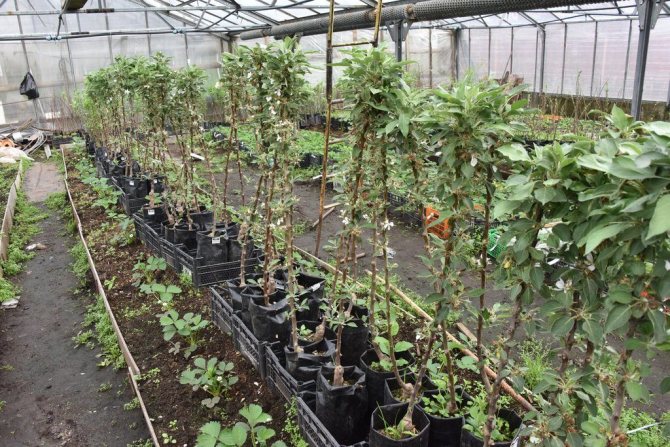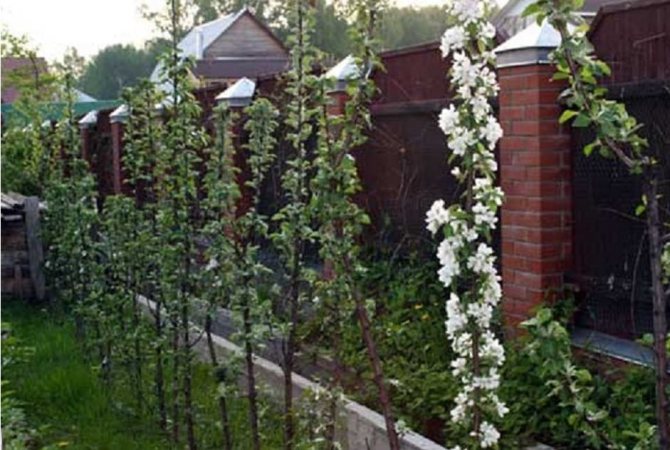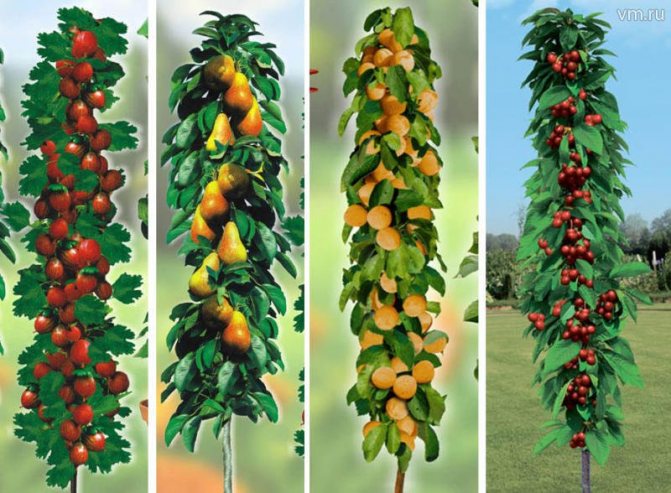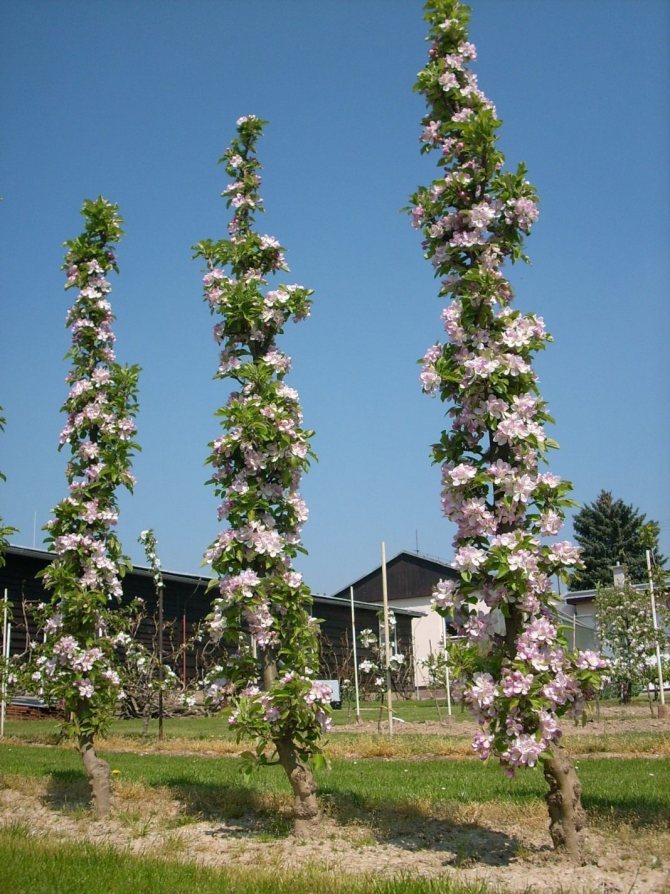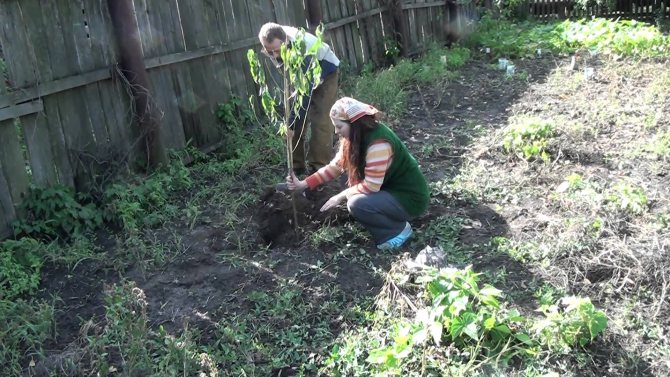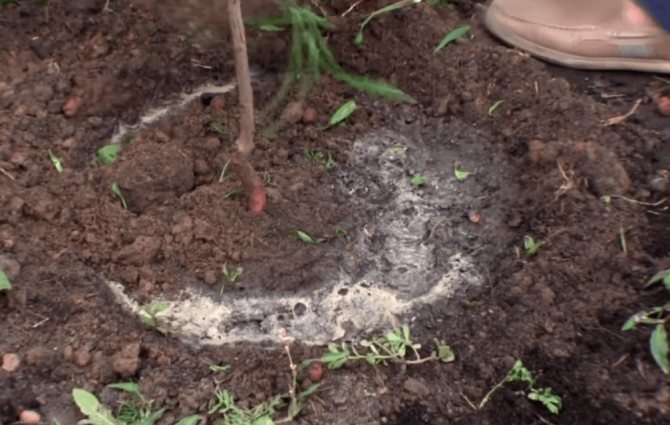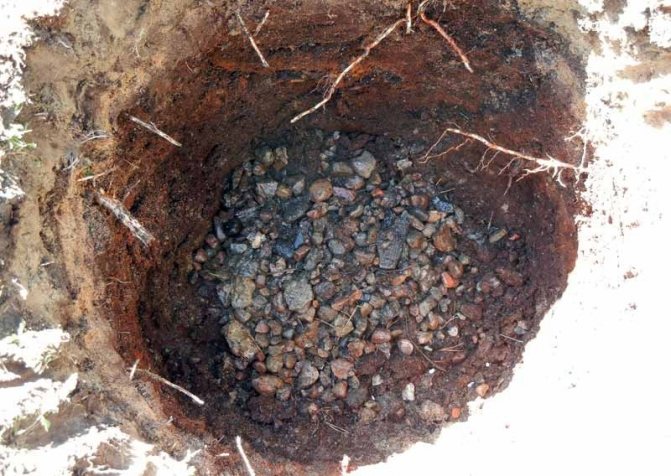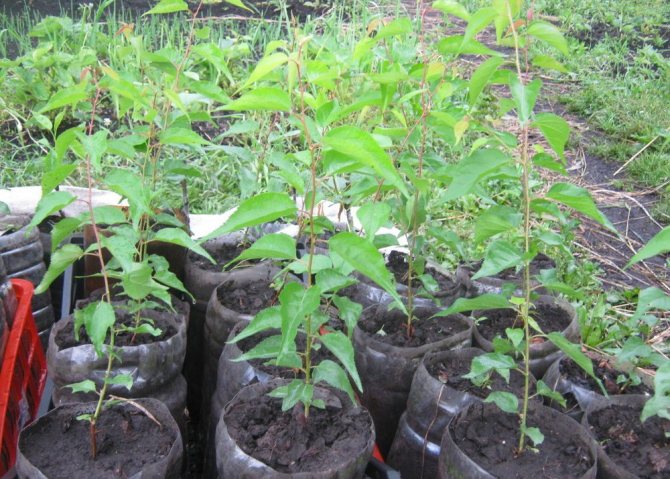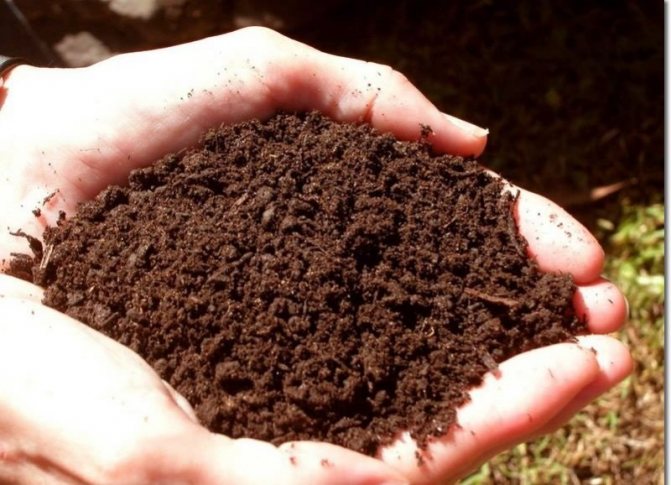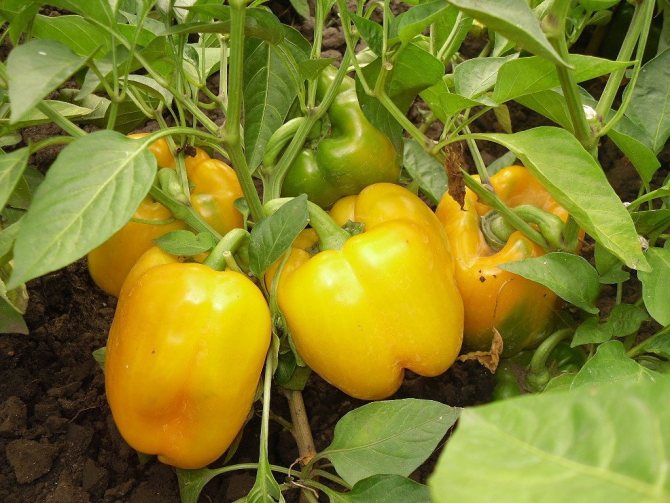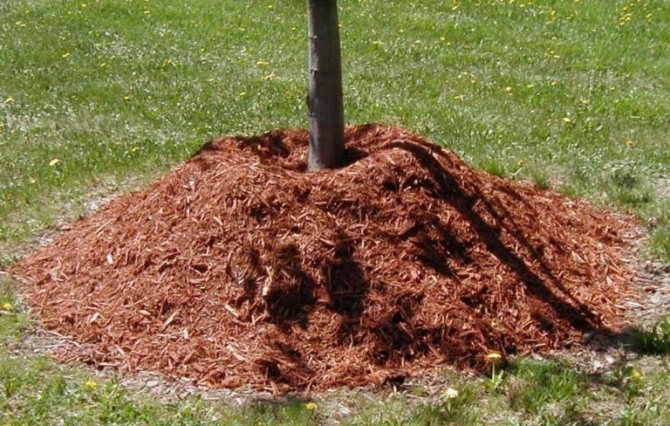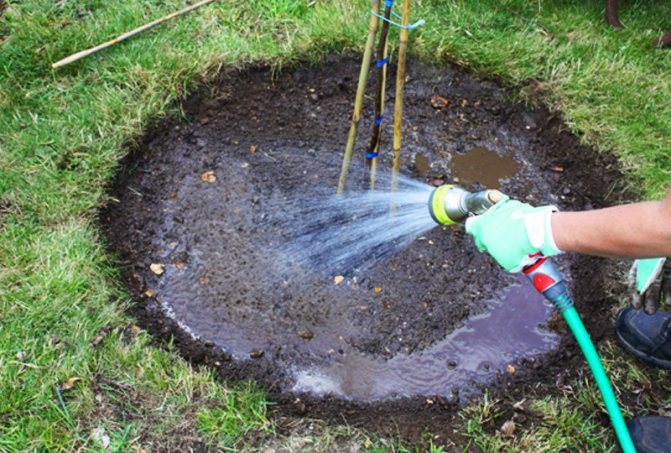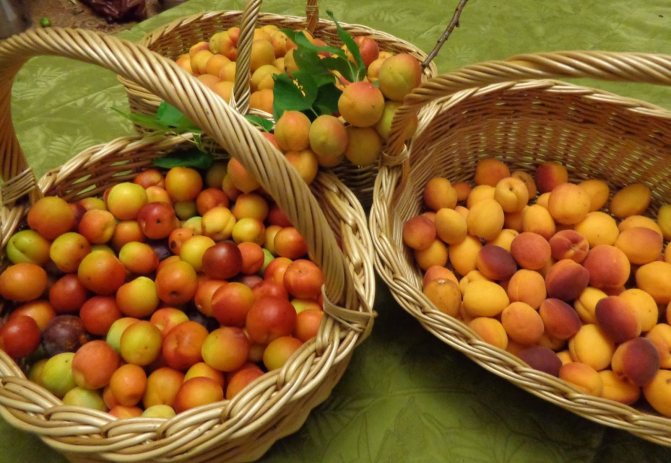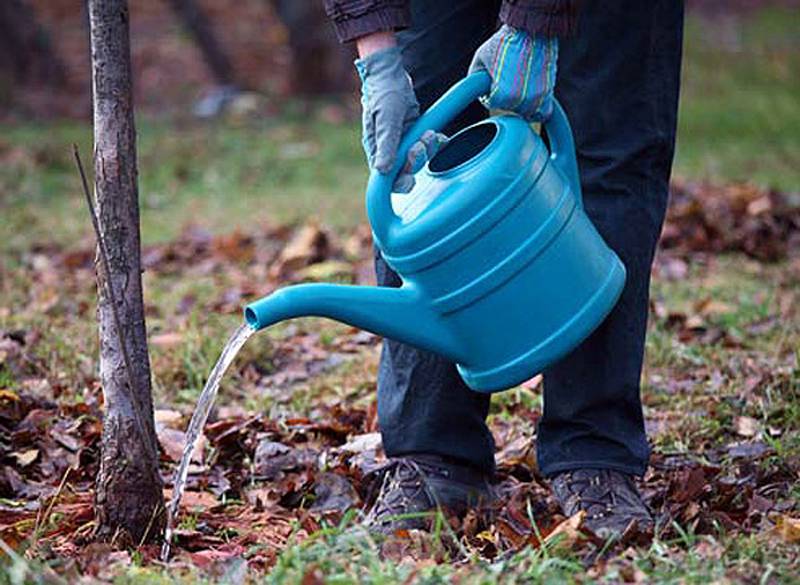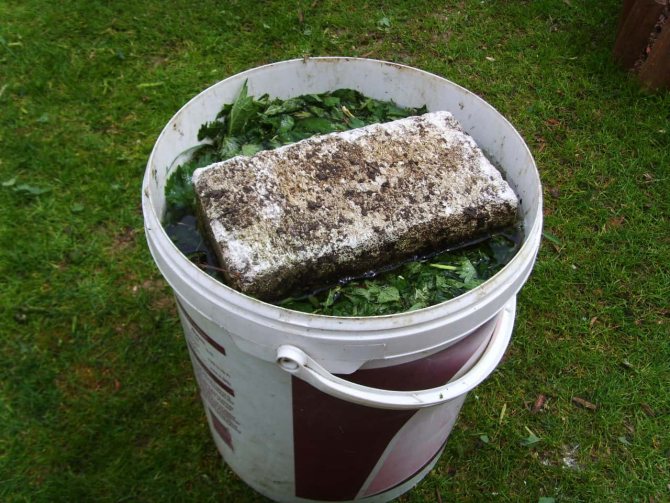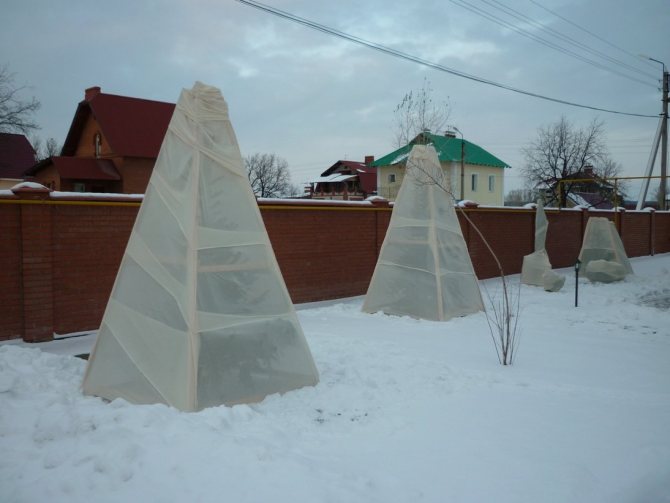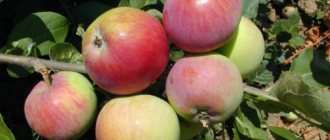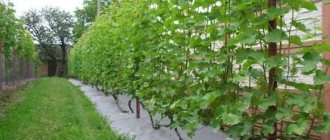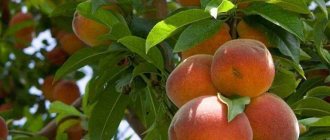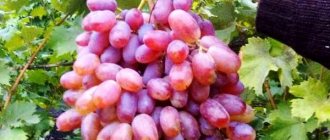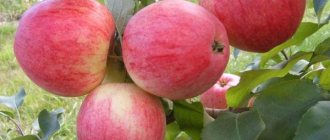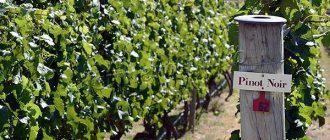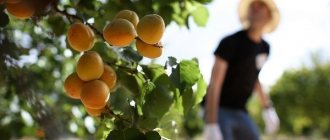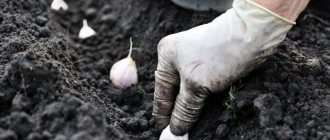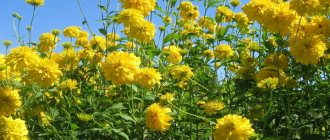What summer resident does not dream of planting an apricot on his plot? Previously, it was impossible to do this in the northern regions. Thanks to the hard work of breeders, there are now varieties that can perfectly tolerate the winter cold. Bred varieties of compact form, taking up little space - columnar apricots. How to plant a columnar apricot and care for it, I will tell you in this article.
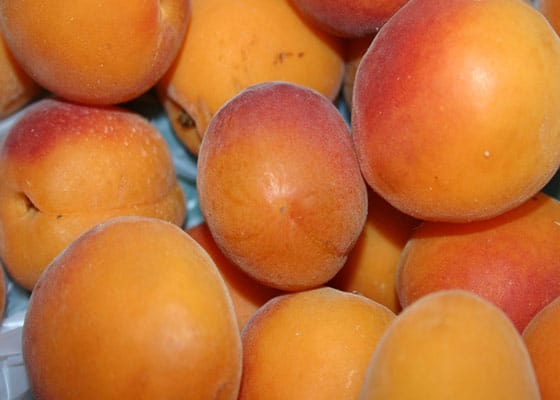
Popular varieties of columnar apricot
Prince March
Sometimes this variety is called simply Prince. It is famous for its high yield and frost resistance, it can be cultivated in the Urals and Siberia. It is self-fertile, which is a great advantage - there is no need to plant other apricot trees nearby. The Prince blooms in early spring, when the pollinating insects have not yet become active.
Fruits are bright orange in color, with a raspberry blush and dark specks on the sunflower side, suede to the touch. The weight of one fruit is about 30-60 g, the pulp is bright yellow, juicy, sweet, with a honey taste and barely perceptible acidity. The stone separates well, the pulp does not boil over when making jam and compote.
The tree reaches a maximum height of 2 m. Begins to bear fruit in 2-3 years. Productivity is stable, apricots ripen in early August. This variety has good immunity to diseases and pests.
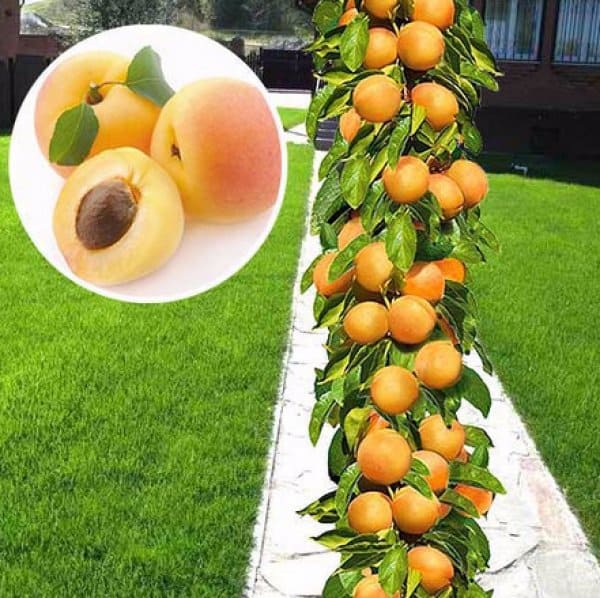

Star
The variety is famous for its large size. Often the weight of one fruit is 60 g, but there are also giants weighing up to 100 g. The variety is self-pollinated, high-yielding, blooms in late April - early May, when the danger of recurrent frosts has already passed.
Fruits ripen in the second half of August. They are yellow-orange in color, with a raspberry blush, have a thin skin, pale yellow, not too juicy pulp with a pleasant aroma and excellent taste.
Up to 10 kg of the crop is harvested from one tree. The variety is frost-resistant and can withstand up to -30 degrees of frost. The tree grows up to 2 m in height and begins to bear fruit in the third season of its life. The variety has high immunity against diseases and pests.
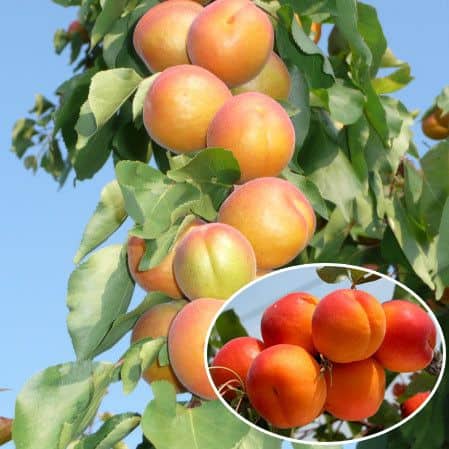

Gold
Sometimes it is simply called Gold. The variety is famous for its early ripening - in the last days of July. Its other advantages are self-fertility and frost resistance (up to -35 degrees below zero). The tree grows to a height of 2.2-2.5 m. It brings a yield of up to 8-10 kg per plant. The flowering period begins in April and lasts 2 weeks.
Fruits are slightly oblong in shape, weighing 50-55 g. The skin is almost smooth, yellow in color, with blurred pink and scarlet spots. The pulp is orange, juicy, with a pleasant taste and aroma.
This variety loves sunny and warm places, but does not tolerate areas with too moist soil, its roots are easily subject to rotting.
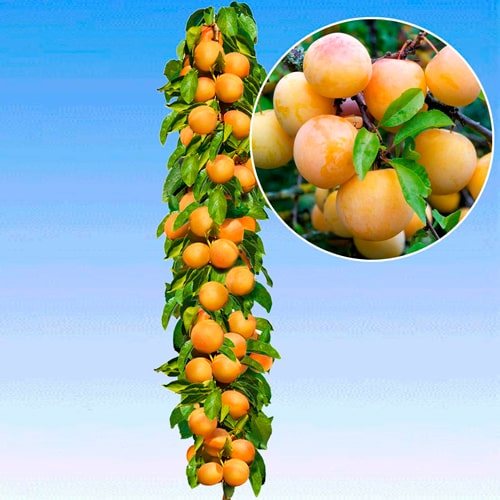

Sunny
This variety is distinguished by extended periods of fruiting - the fruits ripen throughout August. The variety grows well in a slightly shaded area, but its yield and taste suffer in full shade. It has high frost resistance, easily tolerates frosts of -32-35 degrees.
The fruits have a bright orange skin, suede to the touch and with a bright blush on the sunflower side. The pulp is sweet and juicy, the weight of one fruit is 40-60 g, 15-17 kg of apricots are obtained from one tree.
This variety does not have self-fertility, so next to it it is necessary to plant 2-3 more apricot trees, which will bloom in the same period - in the second decade of April.
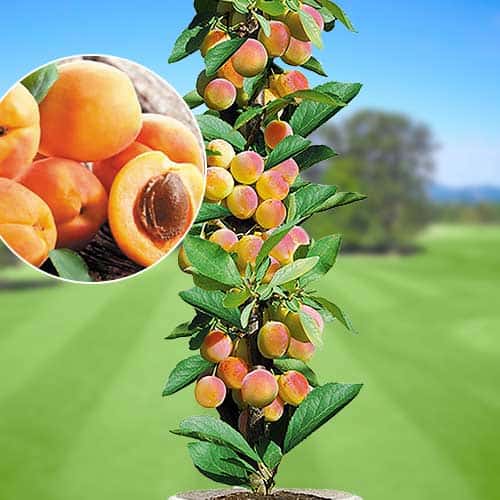

Description, external features
The tree of the new apricot variety has an interesting column-like shape. Short branches extend from the straight trunk, the length of which does not exceed 20 cm. In the south, the plant reaches 3 meters in height, in the middle lane the trees are slightly lower. White or pink buds bloom on them in early spring - late March or April. Leaves, regardless of shape, are pointed upwards.
On the side branches, orange, red or yellow apricots ripen. The weight of the fruit depends on the variety, on the growing conditions and care, on average it weighs 20 g, some specimens reach 80, or even 100 grams, but there are also very small berries. Summer residents are happy to plant columnar apricots, since a tree needs no more than a square meter of area for growth and fruiting. The advantages of varieties include:
- The ability to preserve fruit for the winter.
- Good yield.
- Interesting appearance of the plant.
Fruits appear in the third year, it is easy and convenient to pick them off. Columnar apricots are immune to many garden tree diseases. However, not all summer residents know how to form a crown, that the plant needs to be cut every year, without this the culture does not develop normally, few fruits ripen.
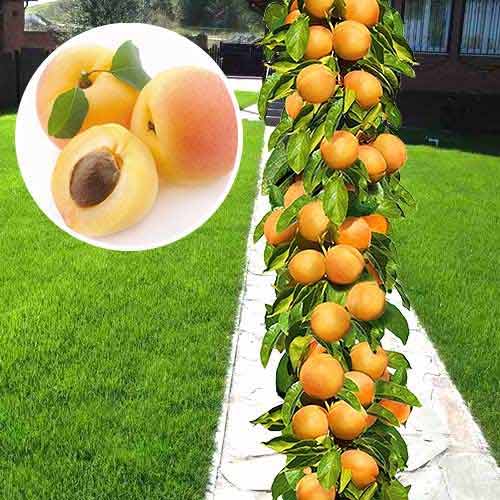

Choosing a landing site
Apricots are columnar, like simple ones, they love the sun and warmth. For a columnar apricot, you need to find a place that is reliably protected from drafts and winds. The best place will be between buildings, in the corners of the fence, but it must be taken into account that less flowers are formed in the dense shade, the yield decreases, and the fruits are not so sweet.
Various lowlands are completely unsuitable for planting apricots, cold air masses accumulate there, and stagnation of inputs in the soil forms, which is unacceptable.
The soil for the apricot should be well permeable to water and air, light and nutritious, loam or gray soil is best.
It is highly undesirable to plant apricots in areas where nightshades, raspberries and strawberries used to grow. After them, pathogenic fungi can remain in the soil that can destroy the tree.
Gardeners reviews
Elena, Pukhovichi district
Years go by, everything develops, and now we can see and, if desired, try to grow: columnar apple trees, pears, apricots, plums and even cherries.
Elena
Apricots, plants are in a vegetative state for a long time, they need the air temperature to be more than 15 degrees for two weeks for the plant to begin to bud.
Preparing for landing
In the southern regions and subtropics, columnar apricot can be planted in spring and autumn. In the northern regions, planting is carried out only in the spring. Preparation for spring planting begins in the fall:
- Seedlings should not be bought from hands, only from nurseries and specialized stores. It is better if the seedlings are two-year-old, they should be examined well, and healthy trees, 1-1.2 m high, with developed roots and with a noticeable graft site, should be chosen.
- They dig a landing pit 50 * 50 * 50 in size. A drainage layer 4-5 cm thick is laid out on the bottom. Crushed stone, pebbles, expanded clay, fragments of clay shards are suitable as a drainage material.
- The top layer of soil 15-20 cm thick is mixed with an equal volume of humus or rotted compost, half of the coarse river sand is added. If the soil is acidic, then dolomite flour, slaked lime or crushed chicken egg shells are mixed. There, add 100 g of carbamide, 80 g of nitrate, 150 g of superphosphate per pit. Mineral fertilizers can be replaced with wood ash (1.2-2 liters).
- The prepared soil mixture is poured into the bottom of the pit in the form of a mound, at a short distance from the top, a peg is nailed down to support the seedling. Cover the pit with roofing material, and leave it until spring.
How to prune properly
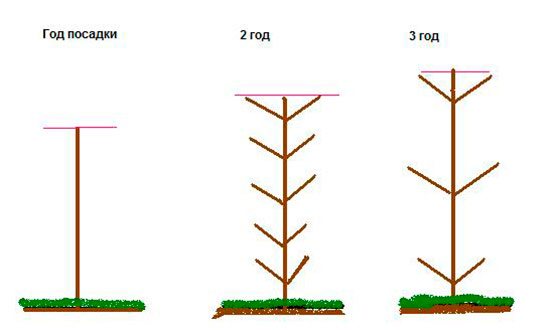

One of the features of apricot and all stone fruits is the high activity of the buds - almost all hatching go into growth. Moreover, the fruits are formed mainly on the branches that grew last year, or on bouquet branches, spurs and other fruit formations. Their lifespan is usually about three years.
As the tree ages, its growth processes are inhibited. Flower buds are formed only on short shoots, and at the end of fruiting, these branches are bare. And due to the short life of the bouquet branches, the older branches also become bare. Therefore, adult apricots need to maintain growth processes, and this is what you need to focus on when pruning.
Pruning a columnar apricot is very important. It is best to adhere to a non-tiered form (see photo), highlighting 5-6 main branches and leaving about 40 cm between them. Distances. Correction of the shape of the crown begins from the first year of the plant's life.
- If, when planting in spring, the seedling has no branches, it is cut off at a height of 80-90 cm.
- If there are side branches, then two of them are left, if possible those that are directed along the row, and are shortened by half.
- All other branches are cut into a ring. The length of the center conductor should be cut 20-25 cm longer than the rest of the branches.
In summer, all competitive shoots formed at an acute angle are removed. In subsequent years, another 3-4 main branches are selected and pruned, on which branches will then form. The recommended distance between them is 35-40 cm.
To form a beautiful crown, you need to ensure that the upper shoots do not overtake the lower ones. If there are extra shoots, they can be shortened by turning them into fruit twigs.
Once the desired crown shape has been achieved, it remains to maintain it. To do this, you need to maintain the active growth of shoots by cutting them by a third (if the branching of this variety is good) or by half. If the tree is growing very quickly, additional pruning can be arranged in the summer, cutting the shoots by half or a quarter, depending on the intensity of growth.
We recommend reading: Contents1 Why you can pave asphalt in any weather1.1 Modern types of paving1.2 Sequence of asphalt paving1.3 Sequence of performing patching
Landing
- If the seedlings were purchased with closed roots, then 2 hours before planting, they must be watered, and then carefully remove the seedling from the container along with the earthen clod.
- If the seedlings are with open roots, then it is necessary to soak the roots in a solution of any growth stimulant about 24 hours before planting. Next, you should examine the roots, remove the rotten and damaged ones, and moisten them in a clay mash.
- The substrate on the bottom of the pit is moistened before planting, and the seedling is placed in the center of the pit. If the roots were in a coma of earth, then a hole is dug in the center of the mound, and a seedling is installed in it. If the roots were open, then the seedling is placed on a mound in the hole, and the roots are straightened.
- The seedling is covered with soil layer by layer, each time compacting the soil so that there are no air voids left. The root collar should be 5-7 cm above the ground.
- A circular groove is formed at a distance of 40 cm from the trunk. Water the seedling with lukewarm, settled water, 22-27 liters per tree.
- After about half an hour, the root zone is mulched with peat chips, fresh hay, humus. Tie the seedling to a peg.
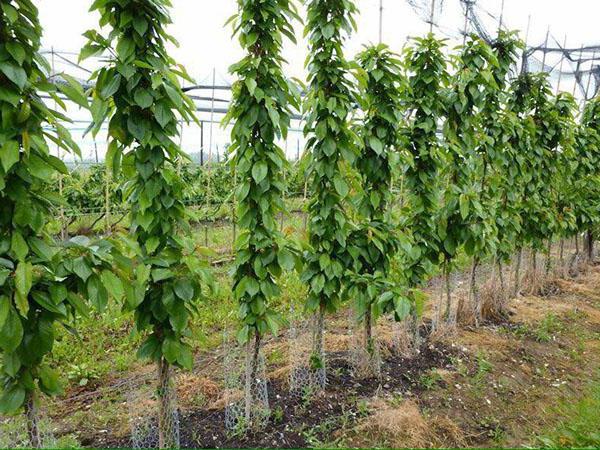

Fight disease
Infections and pests cause significant damage to plants, leading to the death of the crop and the tree itself.
- Moniliosis is the most common disease.It enters the active phase in spring, during the period of rains and fogs. Flowers and leaves begin to wither, branches die, the trunk cracks, and gum is released from the cracks. In the summer period, infection and subsequent rotting of the fruit occurs.
- Clasterosporium appears first on the leaves. Crimson spots appear on them, then holes form. The bark of some shoots cracks with the appearance of gum.
- Of the pests, the most dangerous for apricots are aphids, which weaken the plant's immunity, and the moth, which leaves eggs on the fruits.
Preventive sprays with Bordeaux liquid help protect the apricot from these diseases. Trees are sprayed in the spring at least three times: several times in the summer season and in the fall before wintering. Affected branches, leaves and fruits must be cut and burned to prevent the spread of the disease.
In autumn and spring, the trunk is whitewashed with lime. When the first traces of the disease appear, the plant is immediately treated with drugs that can be bought in the store.
Columnar apricots take a little effort to grow, but the results will be worth it.
Care
Watering
When watering, it should be remembered that waterlogging of the apricot roots can lead to their decay. In moderate weather, watering once every 2 weeks will be enough for one tree. Watering should be done more often in summer drought. One tree requires 30 liters of lukewarm, settled water. Water the apricots early in the morning or late in the evening.
1.5 months after harvest, before the onset of frost, each tree is watered abundantly, and then watering is stopped until spring.
Top dressing
The first 2-3 seasons after planting do not feed the apricot, it has enough of those fertilizers that were mixed in the planting pit.
Immediately after thawing the soil, gentle loosening is performed, during which urea or ammonium sulfate is added. In 2 years, 12-15 liters of humus are introduced once.
Next, minerals and organics are alternated in the form of a solution of chicken manure, cow dung, chopped herbs. Fertilizers are applied once every 5-6 weeks during the entire growing season.
After the end of fruiting, just before the shelter for the winter, wood ash is introduced.
Pruning
In order for the tree to retain its columnar shape, it needs competent annual pruning. After dismantling the winter shelter, sanitary pruning is performed, broken and frozen shoots are removed.
In spring and autumn, at zero ambient temperature, formative pruning is performed. To do this, remove all branches at a height of 40-45 cm from below. The shoots are cut, leaving 12-17 cm and the distance to the honey along the trunk is 15 cm.
Diseases and pests
Since columnar apricots have a high immunity to diseases, it is enough to take preventive measures three times per season. Spraying with 3% copper sulfate or Bordeaux liquid.
To scare off pests, it is enough to plant strong-smelling plants next to apricots - onions, garlic, nasturtium, rosemary and others. To scare away rodents, the lower part of the trunk is whitewashed.
Wintering
Despite the high frost resistance of columnar apricots, in winter, especially in more severe climates, they need shelter. It is necessary to mulch the root zone with a thick layer of mulch with a mound near the trunk. Build a kind of hut around the tree from scrap materials, and wrap the frame with covering material. In the spring, the shelter is being dismantled.
Harvesting and storage
The apricots must be fully ripe on the tree just before harvest.... For some varieties, it may take 2-3 weeks to mature. Therefore, you can divide the process into 2 stages, and remove the fruit from the tree as it ripens.
It is easy to visually determine maturity: green fruits in the technical stage acquire an increasingly saturated hue and become golden, orange or reddish, depending on the variety.If you plan to sell them, then harvest a little unripe to increase the keeping quality of the fruit. Set aside the damaged ones and use them first.


Stripped fruits quickly soften and deteriorate. Try to remove them carefully, without damaging the skin or bumps.
Optimal storage conditions - basement or any place with a temperature of 0 ... + 5 ° С. A small amount can be put in the refrigerator, and they can be stored there for about a month. The rest is processed into winter preparations, frozen or made dried fruits.
Columnar apricots Is a great modern solution for your garden. Having planted several different varieties, you will get a more varied harvest of fruits, which is quite sufficient both for fresh consumption and for winter preparations. It is very easy to care for such trees, and harvesting is much more convenient than from their tall relatives. Therefore, if you are looking for something new, take a look at this new type of tree.

